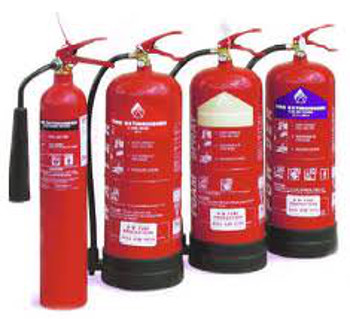Damian Brady
Firesmart

Right now you may be sitting in an office, a coffee shop, bus, train, waiting room or even at home. Cast your eyes around the room. Is there a fire extinguisher nearby? And have you ever wondered what is in those red cylinders? Well it may surprise you to find that there are several types available with different uses for different fire risks. An emergency situation, you’ll agree, is not the time to learn that you have the wrong extinguisher in your hand. So read on.
Extinguishers fall into two categories: safe to use on electrical fires; and not for use on electrical fires. Their contents include carbon dioxide (CO2), powder, AFFF foam, and water and wet chemical.
The CO2 and the dry powder extinguishers are best suited for electrical risks, while the AFFF foam (aqueous film forming foam) extinguisher and water are for more combustible materials (wood, paper and so on – Class A materials). Foam is also suitable for burning liquids such as oils, petrol, diesel (never use a water extinguisher on liquid or electrical fires).
Nowadays in Ireland all portable fire extinguishers are red with a visible colour code to identify contents. All extinguishers sold here pass a high standard set by Europe. European standard EN 3 specifies requirements for portable fire extinguishers [1] and compliance is legally required for the construction of all fire extinguishers in the EU.
These have to do with description, duration of operation, tightness, dielectric test, tamping test, special provisions construction, resistance to pressure, mechanical tests, etc.
Fire Extinguisher Types
Water Extinguisher (Red label)
- Do not use fires involving electricity or flammable liquids.
- Suitable for use on Class A fires.
- Aim at base of fire.
Dry powder extinguisher (Blue label)
- Use on small fires in flammable liquids.
- Gives no protection against re-ignition.
- Suitable for use on Class A, B, C, D and E fires.
Foam Extinguishers (Cream label)
- Do not use on fires involving electricity.
- Can be used on fires in flammable liquids.
- Suitable for use in Class A and Class B fires.
Carbon Dioxide or CO2 Extinguishers (Black label)
- Suitable for use on Class B, C & E fires.
- Use with caution in confined spaces.
Wet Chemical Extinguishers (Yellow label)
- Use on burning oils and deep fat fryers (normally used in retail/commercial outlets).
- Chip pan or pot fires can be eliminated by smothering the supply of oxygen to the fire by placing a fire blanket over the pan or pot.
- Class A flammable solids such as wood, paper, cloth.
- Class B flammable liquids or liquefiable solids such as petrol, grease, diesel, acetone etc.
- Class C flammable gases such as butane, propane, methane etc.
- Class D flammable gases such as magnesium, potassium, sodium etc.
- Class E fires involving electricity or electrical appliances.
- Class F cooking oil fires.
Classification of Fires
When a building is being accessed for fire risks Class A is the first risk to be identified. In most offices, schools, places of work most of the objects are made from wood, paper, plastic such as furniture, curtains, carpets.
Any petrol, diesel, paints are Class B.
Gas appliances such as boilers are deemed Class C
Then more specific risks are looked at, such as computers, machinery, comms rooms, for an Electrical Classification
Deep fat fryers & industrial chip pans fall under Class F.
Remember fire extinguishers are placed for your own safety and to minimise the spread of fire throughout the building. Ireland’s fire extinguishers are installed serviced and maintained in accordance with I.S. 291/ I.S. EN 3/ BS. 5306 standards. Keep safe and remember never give fire a chance.
Copyright © 2011, DPNLIVE – All Rights Reserved
{jcomments on}